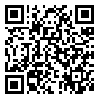BibTeX | RIS | EndNote | Medlars | ProCite | Reference Manager | RefWorks
Send citation to:
URL: http://jdisabilstud.org/article-1-2600-en.html
2- Counselor of Noshirvani University of Technology Health Center, Babol
Background & Objectives: Marital conflict is one of the most common problems today, and psychologists and family counselors are both concerned about its destructive effects. Conflict in human relationships, especially in couples, is inevitable, and no matter how much couples try to avoid conflict in their married life, disputes and problems will inevitably arise. Evidence suggests that couples in today's society have severe and pervasive problems in establishing a satisfying and lasting marital relationship. Because of the increasing statistics of marital disputes and divorce, the use of effective interventions to improve relationships between couples is of particular importance. That is why learning to resolve conflict is essential. According to choice theory, marital conflict is caused by opposing demands of couples, unrealistic desires, irresponsible behaviors in marital relationships, inability to evaluate each other's behaviors, and choosing destructive behaviors of external locus of control. Therefore, this study aimed to investigate the effectiveness of marital skills training based on choice theory in reducing marital conflicts.
Methods: This research is a quasi–experimental study with a pretest–posttest and two–month follow–up design with a control group. The statistical population includes 350 married students of the Education University of Babol. Twenty volunteer couples with a score of 115 and more obtained in the Marital Conflict Questionnaire (MCQ) (Sanaei, 2000) and a score of 9 and more obtained in the Locus of Control Scale (LCS) (Rutter, 1966) were selected by purposive sampling method and randomly assigned to the experimental and control groups (10 couples were in the experimental group and 10 in the control group). The inclusion criteria for couples included having a locus of external control, having marital conflict, being married for 2 to 10 years, being 22 to 40 years old, studying at the university, and participating both husband and wife in all stages of the study. The exclusion criteria for couples were drug addiction, receiving simultaneous psychological and counseling services individually or in groups, getting a divorce, or being on the verge of divorce. The research instruments were the MCQ (Sanaei, 2000) and the LCS (Rutter, 1966). For the experimental group, an educational intervention based on choice theory was performed in nine 90–minute sessions once a week. However, no intervention was provided for the control group. In this study, descriptive statistics, including mean and standard deviation, were calculated, and inferential statistics, including analysis of variance with repeated measures and Tukey post hoc test, were performed in SPSS software version 26. The significance level for all statistical tests was 0.05.
Results: The results showed that the effects of time (p<0.001), group (p<0.001), and the time×group interaction (p<0.001) were significant for the marital conflict variable. In the experimental group, the mean values of the marital conflict variable in the pretest stage were significantly different from the posttest and follow–up stages (p<0.001). However, this mean value in the posttest stage was not significantly different from the follow–up stage (p=1.000). It means that the marital skills training based on choice theory reduced marital conflict in the experimental group couples in the posttest, and its effects lasted till the follow–up.
Conclusion: Teaching marital skills based on choice theory can be used as one of the interventions for couples who suffer from marital conflict and are going to divorce.
| Rights and permissions | |
 |
This work is licensed under a Creative Commons Attribution-NonCommercial 4.0 International License. |



